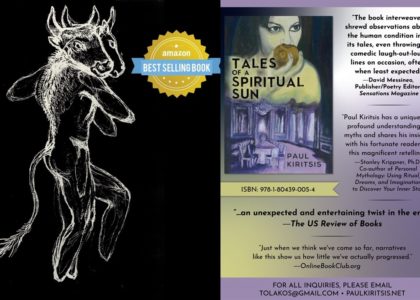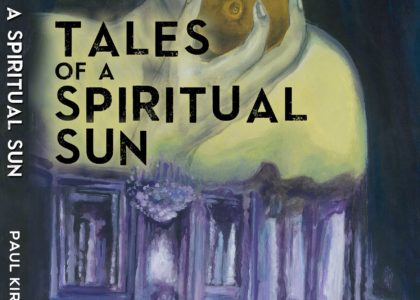
Last year I conducted a comprehensive investigation into the frequency and nature of precognitive dreams, the results of which were published in the e-book, Dreamscaping without my Timekeeper: A Critical Investigation into Precognitive Dreams (2013). The experimental venture turned out to be a great success and validated past research where there was statistical support offered in favour of precognition as a normative aspect of human cognition. Scouring the fifty-one precognitive fragments garnered from the experiment, I was able to make nine overarching extrapolations concerning a ‘psi’ faculty whose existence demands a postmodern modification in the manner that the ontology of mind is currently perceived. Let’s look at each of these nine points in greater detail, expanding each in the context of recent MMI (Mind-Matter Interaction) research.
It turns out that the precognitive faculty is not confined to altered states of consciousness because in many instances precognitive impressions were successfully transmitted to fully conscious observers. If the dramatic visionary experiences of the third and fourteenth subjects of my experiment are anything to go by, then precognitive fragments can indeed manifest during wakefulness as spontaneous visual flashes of intuition. Ms P anticipated the underlying cause of the lamentable Concorde disaster the day before it unfolded whilst Mr G experienced a premonition concerning the morbid constellation of room furniture as it would be roughly a month after a family tragedy. Of course the vast majority of impressions manifested during dream consciousness, indicating that there is an ineffable connection between telepathic and telegnostic projections and an abeyance of what we call the mental ego or ‘survival’ personality.
For some reason incapacitation of the intellect, by nature a judgemental tyrant with overt tendencies in compartmentalization and analysis, equates with an induction into a greater transcendental reality, a reality where there is a collective entanglement of personal thoughts and sentiments along with impersonal knowledge of objects and events. As we know, the former can be quite resistant and impermeable to heuristics that fall outside those theoretical and statistical frontiers with which it is habituated or those to which it adheres to in defining its cosmos. We understand that many ‘psi’ processes (i.e. precognition, telepathy, psychokinesis, clairvoyance) are brought to a halt when the intellect is allowed to interject with opinions on how the mechanics of reality ought to be. Our unconscious seems to concur with this assessment, offering up related symbolizations communicated to us through dreams; how many times have we engaged in dreamscaping pastimes like flying, levitating, or walking upside down and then found ourselves grounded when the slightest pang of doubt set in? In hindsight, would it be fair to say that what seemed to be a natural endeavour in the dream state had been hijacked by the spontaneous reproaches of a different ‘self’, an intellectual self that reigns supreme during the diurnal hours? I think so. Doubt and suspicion are the colouring tools of an intellect endeavouring to convince oneself that certain actions in the environment are impossible to execute. It desperately wants us to believe that there are no wonders or worlds beyond the conditioned walls of the ego state.
Hence pivotal to the experience of precognitive dreams is the suspension of disbelief–everything must be deemed possible! Save for this, dream consciousness is also characterized by a level of detachment; the suspension of judgement; meditative relaxation; synaesthesia or the modification of sense perception; the frequent condensation of attention; the conviction that all things partake of One and are fundamentally interconnected; and right-hemispheric bias where primary communication is feeling-based, imaginal, and symbolic. When we dream the emphasis is on being and not thinking, on creating and not slipping into the role of a pawn in an ordained universe. This is probably one of the few times when the recollection of personal willpower, the call to mental action, is entirely futile. Trying too hard will probably inhibit the faculty rather than facilitate it. At the end of the day the clarity of our vision into the future is sharpened when we’re wearing our creator or creatrix caps, just as children do during their fervent expeditions to Emerald Cities in the school playground. Openness and receptivity are the only authentic keys.
Logically, the nature of precognitive elements must be examined against the ambiance of dream consciousness–the actual substrate from which they arise–in order to extrapolate a speculative philosophy about mind based squarely on the experimental trends. More often than not, the bundle of mental impressions uniting to form an individual’s dreamscape is comprised of personal fantasies, desires, genuine introspections, and precognitive splinters.[1] The latter is somehow moulded, infused, or inserted into the dream fragment in the manner that silver coalesces with mercury to form the natural alloy arquerite within the searing womb of the earth. The current experiment churned up the same hypothesis; vary rarely did the subjects’ associative waking experiences replicate the precognitive episodes in the exact same chronological sequence and with the exact same intimate details. What this seems to propose is that the mental ego, the part of the human personality that identifies as “I”, is in a constant state of projecting forwards in time and ‘imagining’ future narratives of its own autobiographical history. Once the course of action has been determined a functional part of the personality, perhaps what has been termed by many the higher Self, collapses the former into unconsciousness and drives the individual towards the premeditated intention in a way that appears totally random.
Inspired by American psychic Edgar Cayce (1877-1945), Henry Reed articulated this particular notion in a book entitled, Edgar Cayce on Modern Mysteries of the Mind (1989) where he states that: “While we dream, the soul scans ahead to forecast the likely outcome of various attitudes and actions that are competing for our attention. It sorts through various mental patterns and selects new ones to place within the projector to be cast upon the screen of life. Dreams thus are like seeds of our future experiences. What we call real life is but the consequence of our dreams.”[2] More recently Rex Stanford (1967- ) has impregnated the metaphysical assumption with scientific jargon of the age so that it accords with the most current developments in quantum theory. Working under what he calls conformance theory,[3] Stanford deduces that precognition is simply a goal-orientated data gathering process utilized by psychoneural systems for the sake of satisfying their personal needs. As a general rule of thumb, only objects and events that fall directly in line with unconscious intent will be singled out and stitched into the embroidery of reality; everything else is obstructed before it reaches subliminal awareness. Despite systematic differences in hermeneutic– one being metaphysical in origin and the other ‘scientific’–both aforementioned theories are effectively stipulating that we construct our own reality, our perceptions and experience, and furthermore, that the quantification of this reality is contingent on observations undertaken on a conscious or unconscious level.
This concept is best understood through a 1970s experiment conducted by German-born parapsychologist Helmut Schmidt (1928-1911) into the retroactive capacities of the mind.[4] In what might be described as an innovative leap in mind-matter research, individuals who registered for participation were challenged to exact some sort of mental influence upon Random Event Generator (REG) and Random Number Generator (RNG) targets that had been pre-recorded on magnetic tape or computer disk. Schmidt soon discovered that events of probabilistic ambiguity delineated by the targets could be influenced retroactively by sentient observers on occasions where there had been no prior observation. Human observation, it seems, is almighty and powerful, able to exert influence over the transmission of random data. If humans can manipulate the expression of targets away from what might be expected by mean chance, then there’s no reason why they shouldn’t also be able to mould the cosmos according to their unconscious will, perhaps by projecting forward and singling out phenomena for exclusive inclusion in their autobiographical narratives. Something that can manipulate matter and outer reality in retroactive fashion should also be capable of the opposite, proactive causation. More so if the findings of Schmidt’s experiment are anything to go by, then the act of having observed some distance into the ‘future’ collapses the probability wave in ways that outlaw possible influences streaming forth from subsequent mental efforts. What might the implications of such be? Namely that decisions predetermined by unconscious observation can only be changed if precognitive constituents betraying their imminence enter conscious awareness well ahead of time, and then only by the sentient observer who cognized that machination. The reason why most premonitory visions cannot be altered is because they manifest alongside the event to which they are retrocausally connected. Most would agree that a day or even two is simply not enough time to change the projected outcome!
While the clarifications mustered by conformance theory and its metaphysical predecessors satisfies the criteria for the existence of precognitive dreams of a ‘personal’ nature with implications custom-made for the observer who received them, there is much doubt as to whether it also satisfies constituent ones for a ‘collective’ type of visionary experience relating to the future states of other sentient observers as well as cosmic events. In Dreamscaping without my Timekeeper (2013) the latter were even more dramatic and momentous than the former. One preternatural dream involving a passenger jet which fragmented into innumerable pieces up in the atmosphere uncannily entered phenomenal reality through a newspaper heading with the words, PLANE BLOWS UP OVER FRANCE, the very next day (Subject 3, Ms P).[5] The same subject received telepathic information concerning an airplane tyre a day before Air France Flight 4590 ran over a strip of metal dripped onto the runway by another plane while taking off, triggering a tyre blowout.[6] In another instance news of a colleague’s successful water birth communicated by phone was immediately preceded by a dream in which the same colleague gave birth to a plastic doll over a kitchen sink full of water (Subject 10, Mr T).[7] And in yet another a visionary experience involving the purchase of a black and white harmonium from a music store is communicated to the subject three days before she hears from a friend who has received the aforementioned instrument as a birthday present (Subject 12, Ms A).[8]
In earnest consideration of these ‘collective’ dreams, what purpose would scanning ahead for psychic information unrelated to the creation of a meaningful existence actually serve? None whatsoever. This theoretical incongruence compels the entertainment of alternate paradigms like quantum theories which do offer explanations as to how and why such data may become available to nonlocal minds. For instance the “Weak Quantum Theory” pioneered by Atmanspacher, Roemer, and Walach[9] adheres to universal origination from the Big Bang in elucidating why co-mingled and separate particles in the cosmos remain correlated nonlocally in the space-time continuum; such a correlational matrix allows for the possibility that cosmic computations from nonlocal minds and other matter can infiltrate the unconscious mind of a salient observer when he or she enters a receptive conscious state emancipated from intellectual censorship. Quantum entanglement affords explanations of precognitive functioning spanning from the collapse of probability waves and influencing the state of probabilistic uncertainties through unconscious projection to the acceptance of data from distant, correlated localities when receptive and dissociating processing systems of human consciousness are activated. Put simply entanglement says that we can predetermine our events by directing observation and at the same time become overwhelmed by foreign events by pulling the plug on an unconscious which stands between personal memories and thoughts and the rest of the information universe. This paradigm of ‘psi’ operation explains mechanisms of action for both the ‘personal’ and ‘collective’ kinds of precognitive experience. From this angle, the latter may simply be the inhibition of left-brain processing rather than a by-product of aggressive information transfer from distant minds and matter. The vast majority never make it to consciousness precisely because they are irrelevant to the intrinsic worth and needs of the organism. (Only 12% of precognitive fragments registered by the experiment were ‘collective’ in nature.)
Another of the observations concerns vantage point. Just like all other dream types, precognitive fragments can be experienced from first-person or third-person perspective; sometimes the observer encounters the dreamscape from within their own body and at other times as a submissive, impartial ‘’third’ entity looking down upon their own self.[10] A phenomenological contextualization would suggest that dream consciousness can replicate psychological duality, with a first-personal perspective reflecting the retention of some ego boundaries and a third-person perspective a cold, detached observation of the ego-conscious by the higher or transpersonal Self, respectively. The only other possible explanation I can think of pertains to the ontology of dreams, where the altering perspectives (from first to third-person) might be a vivid symbolization of authentic dissociation from the ego state. How many times do we experience dreams in which the personal self is witnessed as something ‘other’, an entity extraneous to the substrate of our own being? Many, I would think.
Translated into the cognitive and behavioural language of wakefulness, this same singularity becomes symptomatic of severe psychopathology. To dream in dissociated states nowadays is normal however to experience them during wakefulness is decreed by clinicians as highly ‘abnormal’. Such collective perceptions will probably morph numerous times in the next few hundred years, perhaps in favour of those psychological phylogenies currently burdened with some sort of social stigma. Logically our task here is not to magistrate the archetypal model under which modern clinical psychology functions but to look for semblances that might lead to a healthier and more progressive understanding of mind-matter interaction. Because ‘psi’ expression remains fundamentally unaltered by psychoneural alterations brought on by the sleep-wakefulness cycle, I would infer that the dissociative process operant during dream consciousness is the exact same one at work in the psychopathology of schizophrenia and Dissociative Identity Disorder (DID). If this deduction holds true then the overarching qualities of both types, for instance impartial observation and detachment, would be conducive to the experience of prophetic dreams. And from the findings of past research it appears that they are!
Advances in cognitive neuroscience are thus far supporting the said perspectives on the phenomenology of precognitive episodes. Studies in split-brain patients have shown that the right and left-hand sides of the body controlled by the left and right-brain hemispheres begin to act in an autonomous fashion when the corpus collosum is severed, often unable to coordinate for the completion of set tasks. Even more striking is the lack of transcortical democracy, meaning that the two halves of the brain are wired slightly differently in encountering reality. The right is akin to a holistic, nonlinear kaleidoscope that encodes the information universe into multiple overlapping realities; it is a psychic conduit for emotional and prosodic intelligence; it is feeling, vision, and image-based with a preference for symbolization; and it is associated with primitive unconscious processes that fall outside the evolutionary dominion of higher conscious awareness. The left is a complimentary interpreter, encompassing more compartmentalistic modalities of knowing that circumscribe immaterial aspects of being and the environment through linear, sequential quantification, and semantic language. It gathers and categorizes information according to the social constraints of space-time, forging an autobiographical history for a conscious social self with implicit authentic memories and confabulations. The right wishes to flood the field of consciousness with random and nonlinear psychic information; the left sorts through the inheritance, picking and choosing as it sees fit in order to craft a meaningful self against the ambient background of fields. Its plight for meaning is the principal reason why split-brain patients perceive the left hemisphere as oneself. Standing in the periphery, the right becomes the entity beside oneself, in other words a transpersonal alien force desiring to overrun the ego state. The two forms of conscious awareness are at complete loggerheads with one another.
From the ontological level of neural mechanisms, auditory hallucinations transpiring during psychosis have been described as atypical, transitory intrusions of right hemisphere processes into the integrated experience of self as concocted by the domineering left hemisphere.[11] Virtually untutored in right-brain language, the left brain utilizes interpretative mechanisms indigenous to its own being in identifying and categorizing the mental stimuli and is thus complicit in the rationalization of delusional content. Thoughts, the substrate of mind, are extremely powerful and can initiate subtle changes in the composition of matter. When there is a radical alteration of dopamine levels and subcortical activation of consciousness regulators such as the thalamus due to the prolongation of abnormal and inwardly-orientated thoughts, the inner unconscious universe inverts, becomes conscious, and interjects into personal awareness, appearing as though ‘voices’ are streaming forth from a space beyond the unified self. Most of the time the ‘voices’ are splinters of primary process thinking like implicit memories, fantasies, and other confabulations, but they can also be telepathic information about distant places, times, and persons that have infiltrated the mind courtesy of ego entanglement in the collective unconscious (as is the case with higher-order hallucinations). Whatever comes through under such circumstances has escaped transliteration into unconscious tape by the dominant left-hemispheric sensors and so closely resembles, as so many psychotic patients have put it, the experience of ‘dreaming while awake.’[12] As the phenomenology would suggest, the same dissociated processing mechanisms are at work in the collective dream consciousness. Consequently from a neuroscientific vantage point we see that states of consciousness favourable to precognitive expression are also those in which there is an intrusion of right-hemisphere functions into left-brain processes, or periods wherein the interpreter of the left hemisphere is in abeyance.
Finally, the experiment adopted a transpersonal stance by defining the precognitive faculty in terms of bottom-up or top-down transmission of telepathic information to the mental ego.[13] My principal theorization was that the first (bottom-up transmission) is instigated by a personal unconscious hoping to communicate powerful messages about the present state and most likely future of an observer to whom it is connected if certain cognitive and behavioural patterns continue to reiterate (something very reminiscent of Carl Jung’s ‘big dreams’). On the other hand the second I took to be telegnostic projections from the superconscious mind about the future trajectory of other observers and imminent events of a phenomenal nature. What I have termed bottom-up transmission seems to be intimately connected with ‘personal’ instances of precognition while the top-down variety appear to be associated with the rarer ‘collective’ kind. In the language of modern MMI research bottom-up transmission would encapsulate “percipient-active” telepathy, with the individual actively scanning and receiving information from the environment, and top-down transmission to “agent-active” telepathy, a more passive, receptive process that impresses telepathic information upon the receiver’s mind.[14] The analogous conclusions garnered by past researchers and myself advocates for the bidirectional orientation of precognitive dreams.
[1] Paul Kiritsis, Dreamscaping without my Timekeeper: A Clinical Investigation into Precognitive Dreams (2013), pp. 54.
[2] Paul Kiritsis, Dreamscaping without my Timekeeper: A Clinical Investigation into Precognitive Dreams (2013), pp. 56-57.
[3] Pamela Rae Health, Mind-Matter Interaction: A Review of Historical Reports, Theory and Research (Jefferson, North Carolina: McFarland & Company, 2011), pp. 157.
[4] Ibid, pp. 94-95.
[5] Paul Kiritsis, Dreamscaping without my Timekeeper: A Clinical Investigation into Precognitive Dreams (2013), pp. 80-81.
[6] Ibid, pp. 82-84.
[7] Ibid, pp. 148-150.
[8] Ibid, pp. 164-167.
[9] Pamela Rae Health, Mind-Matter Interaction: A Review of Historical Reports, Theory and Research (Jefferson, North Carolina: McFarland & Company, 2011), pp. 160.
[10] Paul Kiritsis, Dreamscaping without my Timekeeper: A Clinical Investigation into Precognitive Dreams (2013), pp. 54.
[11] Louis Cozolino, The Neuroscience of Psychotherapy: Healing the Social Brain (New York, USA: W.W. Norton & Company, 2010), pp. 108.
[12] Ibid, 108-109.
[13] Paul Kiritsis, Dreamscaping without my Timekeeper: A Clinical Investigation into Precognitive Dreams (2013), pp. 55-56.
[14] Pamela Rae Health, Mind-Matter Interaction: A Review of Historical Reports, Theory and Research (Jefferson, North Carolina: McFarland & Company, 2011), pp. 157.









